
Structural Engineering International
Scope & Guideline
Innovating solutions for real-world engineering challenges.
Introduction
Aims and Scopes
- Sustainable Structural Design:
The journal promotes research on sustainable materials and technologies, such as carbon-neutral and low-carbon concretes, emphasizing the importance of environmentally friendly practices in structural engineering. - Advanced Construction Techniques:
It covers innovative construction methods, including rapid replacement techniques and the use of advanced materials like ultra-high-strength concrete, aiming to enhance efficiency and safety in construction processes. - Forensic Engineering and Failure Analysis:
The journal includes studies on forensic structural engineering, focusing on the investigation of structural failures and the application of failure analysis to improve design practices. - Seismic Resilience and Safety Assessment:
Research on seismic performance and resilience of structures is a critical area, addressing the need for robust designs capable of withstanding natural disasters. - Integration of Technology in Engineering:
The journal explores the incorporation of advanced technologies such as machine learning and remote inspection platforms to enhance structural assessment and monitoring. - Collaboration and Knowledge Sharing:
It facilitates discussions on professional development and collaboration among engineers, exemplified by events like symposiums and mentorship programs.
Trending and Emerging
- Climate Change Impact on Structures:
There is an increasing focus on understanding how climate change affects material properties and structural performance, highlighting the need for adaptive designs. - Digital Tools and Machine Learning Applications:
The integration of digital technologies, including machine learning for predictive analysis and optimization in structural design, is rapidly gaining traction. - Innovative Use of High-Performance Materials:
Research on high-performance materials, such as fiber-reinforced polymers and ultra-high-performance concrete, is on the rise, aiming to enhance structural durability and strength. - Resilience and Sustainability in Infrastructure:
Emerging themes related to the resilience of infrastructure systems under extreme conditions are being prioritized, emphasizing sustainable practices and disaster preparedness. - Remote Monitoring and Inspection Technologies:
The rise of remote and autonomous inspection technologies in bridge and infrastructure assessment is becoming a significant area of research, addressing safety and maintenance challenges.
Declining or Waning
- Traditional Materials and Methods:
Research focused on conventional materials and construction methods has seen a reduction, possibly due to the increasing emphasis on innovative and sustainable alternatives. - Aesthetic Considerations in Structural Design:
While still relevant, the exploration of aesthetic aspects in structural design appears less prevalent, suggesting a shift towards more performance-driven research. - Historical Structures and Preservation Techniques:
The publication of studies on the preservation and restoration of historical structures has decreased, potentially reflecting a broader focus on new construction and technology-driven approaches. - Basic Structural Analysis Techniques:
There is a noticeable decline in papers discussing basic structural analysis methods, as the field moves towards more complex and computationally intensive approaches. - Generalized Risk Management Practices:
Research on generalized risk management in structural engineering has waned, possibly due to a growing focus on specific risk factors like seismic resilience and climate change impacts.
Similar Journals
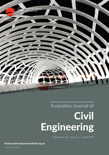
Australian Journal of Civil Engineering
Transforming Ideas into Engineering ExcellenceThe Australian Journal of Civil Engineering, published by Taylor & Francis Ltd, stands as a pivotal platform within the field of civil and structural engineering. With an ISSN of 1448-8353 and an E-ISSN of 2204-2245, this journal consistently delivers high-quality research and innovative practices from both established and emerging scholars in the discipline. Recognized in the Q2 category for Civil and Structural Engineering in 2023, it holds a respectable position, ranking 146 out of 379 within its field according to Scopus, which places it in the 61st percentile. Converging valuable insights from 2011 through 2024, the journal encompasses a broad scope of topics, including sustainable infrastructure, innovative materials, and advanced construction techniques, thereby addressing contemporary challenges faced by engineering professionals. Though it is a traditional publication without open access options, the quality of the research featured ensures that it remains an essential resource for academics, practitioners, and students striving to enhance their knowledge and contribute to the dynamic field of civil engineering.
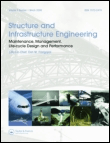
Structure and Infrastructure Engineering
Driving Safety and Reliability in Engineering DisciplinesStructure and Infrastructure Engineering, published by TAYLOR & FRANCIS LTD, is a premier academic journal that serves as a vital resource in the fields of engineering and construction. Featuring an ISSN of 1573-2479 and an E-ISSN of 1744-8980, this journal has established its reputation as a leader in disseminating high-quality research. Since its inception, it has successfully transitioned through converged years from 2007 to 2024, earning a prestigious position within the Q1 quartile across multiple engineering disciplines, including Building and Construction, Civil and Structural Engineering, and Ocean Engineering, among others. Its impact is underscored by impressive Scopus rankings, particularly its 5th rank in Ocean Engineering within the top 95th percentile. The journal’s commitment to advancing knowledge in safety, risk, reliability, and quality makes it an indispensable platform for researchers, professionals, and students aiming to stay at the forefront of engineering innovations. Access to its comprehensive articles allows for a deeper understanding of contemporary challenges and solutions in infrastructure development.

Revista Ingenieria de Construccion
Bridging Research and Application in Civil EngineeringRevista Ingenieria de Construccion is a prominent open-access journal dedicated to advancing knowledge and practice in the fields of building and construction engineering, as well as civil and structural engineering. Published by the Pontificia Universidad Católica de Chile, specifically the Department of Engineering and Construction Management, this journal has been providing free access to quality research outputs since 1986, ensuring that vital information is available to both practitioners and academics globally. With its current placement in the Q4 category of both the Building and Construction and Civil and Structural Engineering quartiles, it serves as a platform for innovative studies and critical discussions, positioning itself strategically within the academic landscape. The journal is indexed in Scopus, ranking #157 in Building and Construction and #291 in Civil and Structural Engineering, reflecting the growing impact and relevance of its contributions. Researchers, professionals, and students are encouraged to engage with the rigorous and diverse content published within its pages, fostering a vibrant academic and practical discourse.

Turkish Journal of Civil Engineering
Fostering Collaboration for a Sustainable FutureWelcome to the Turkish Journal of Civil Engineering, a pioneering publication under the auspices of the TURKISH CHAMBER OF CIVIL ENGINEERS, dedicated to advancing the field of civil engineering and construction. With a focus on cutting-edge research and innovative practices, this journal seeks to provide a platform for scholars, professionals, and students to share their findings and insights within the sphere of civil and structural engineering. The journal is committed to open access, ensuring that research is readily available to a global audience. As it embarks on its journey from 2023 to 2024, it aims to enhance its reputation as a vital resource within the academic community, currently ranking in the 40th percentile for Building and Construction Engineering and 32nd for Civil and Structural Engineering in Scopus. We encourage contributions that push the boundaries of engineering knowledge, fostering collaboration and progress in this essential field.

ACI STRUCTURAL JOURNAL
Advancing Concrete Innovation for Tomorrow's StructuresThe ACI Structural Journal, published by the American Concrete Institute, serves as a premier platform for scholarly articles and research findings in the fields of building and construction and civil and structural engineering. With a commitment to advancing concrete technology and its applications, this journal has amassed an impressive reputation, holding a Q2 ranking in both Building and Construction and Civil and Structural Engineering categories as of 2023. The journal’s focus on innovative research and practical applications enables professionals, researchers, and students to stay at the forefront of industry developments. Although it does not offer open access, the content bears significant impact, ensuring that readers engage with high-quality research. As the journal converges its years of publication from 1987 to 2024, it continues to enrich the academic and professional discussions surrounding structural engineering and concrete science.
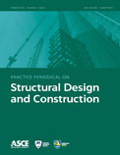
Practice Periodical on Structural Design and Construction
Shaping the Built Environment with Insightful ResearchPractice Periodical on Structural Design and Construction, published by the American Society of Civil Engineers (ASCE), is a vital resource within the fields of civil and structural engineering. With an ISSN of 1084-0680 and an E-ISSN of 1943-5576, this journal aims to disseminate innovative research and practical applications that enhance the design and construction process. Recognized in the 2023 Scopus rankings with commendable placements across categories, including a Q2 designation in Building and Construction, this journal serves as a platform for discourse on the latest advancements and case studies in structural engineering. Though not an Open Access publication, it continues to facilitate the exchange of knowledge and expertise among researchers, professionals, and students engaged in the built environment. The editorial board encourages submissions that contribute to the understanding of sustainable practices, innovative technologies, and effective construction methodologies to meet the evolving needs of infrastructure development.

CIVIL ENGINEERING
Connecting Scholars and Practitioners in Civil EngineeringCIVIL ENGINEERING is a prominent journal published by the American Society of Civil Engineers (ASCE), dedicated to advancing the field of civil engineering since its inception in 1969. With an ISSN of 0885-7024, this journal spans a wide range of topics, including civil and structural engineering, geotechnical engineering, and materials science, reflecting its comprehensive coverage of the discipline. Although currently categorized in the Q4 quartile for several fields, the journal provides a platform for researchers, professionals, and students to present innovative solutions and research findings that push the boundaries of civil engineering practices. While it does not offer open-access options, its accessibility through institutional subscriptions ensures that critical research remains within reach for those intent on furthering their understanding and applications in the field. Conference proceeding articles, case studies, and theoretical papers contribute to its mission of fostering communication and knowledge exchange among civil engineering practitioners and scholars. The journal's commitment to quality and relevance in today's evolving engineering landscape makes it an essential resource for informed decision-making and professional development.
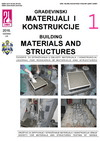
Gradevnski Materijiali I Konstrukcije-Building Materials and Structures
Connecting researchers to revolutionize construction methodologies.Gradevnski Materijiali I Konstrukcije - Building Materials and Structures is a premier open-access journal dedicated to advancing the field of construction materials and structural engineering. Published by SOC MATERIALS & STRUCTURES TESTING SERBIA, this journal provides a platform for researchers, professionals, and students to share their innovative findings and developments in building materials. With a commitment to open-access since 2012, it fosters unrestricted availability of research for a wider audience, encouraging collaboration and knowledge dissemination. The journal features a diverse range of topics, including material testing, structural integrity, and sustainable construction practices, making it a vital resource for those engaged in the design and analysis of structural components. By fostering the advancement of research and practice in this crucial sector, Gradevnski Materijiali I Konstrukcije plays an essential role in shaping the future of construction and material science.

Frontiers of Structural and Civil Engineering
Shaping the Future of Civil Engineering ResearchFrontiers of Structural and Civil Engineering, published by HIGHER EDUCATION PRESS, is a premier academic journal dedicated to advancing the fields of architecture, civil, and structural engineering. With an ISSN of 2095-2430 and E-ISSN of 2095-2449, this journal caters to the dissemination of high-quality research and innovative practices from 2012 onwards, highlighting important developments up until 2024. Ranked in the top quartile (Q1) for Architecture and Q2 for Civil and Structural Engineering in 2023, it holds an impressive Scopus ranking of #19 out of 189 in Architecture and #101 out of 379 in Civil and Structural Engineering, reflecting its impact and relevance in the scientific community. This journal invites contributions that demonstrate pioneering approaches, fostering collaboration among researchers, professionals, and students alike, and significantly contributes to the global knowledge base in the engineering disciplines.
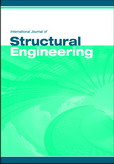
International Journal of Structural Engineering
Pioneering Insights in Civil and Structural EngineeringInternational Journal of Structural Engineering, published by InderScience Enterprises Ltd, has established itself as a vital resource in the field of civil and structural engineering. With an ISSN of 1758-7328 and an E-ISSN of 1758-7336, this journal is dedicated to disseminating high-quality research that addresses contemporary challenges and innovations in structural engineering. The journal operates under a rigorous peer-review process, ensuring that only the most impactful and relevant studies are shared with the global community. Since its inception in 2009, the journal has been recognized for its contributions, earning a ranking in Q3 for civil and structural engineering under the 2023 Category Quartiles and occupying the 40th percentile in Scopus rankings. While currently not an open-access journal, it provides access to a wide array of original papers, reviews, and case studies that are crucial for fostering academic discourse and supporting the ongoing education of professionals and students alike. As it continues to expand its reach until 2024, the International Journal of Structural Engineering remains a cornerstone for those seeking to enhance their knowledge and practice in the dynamic realm of structural engineering.